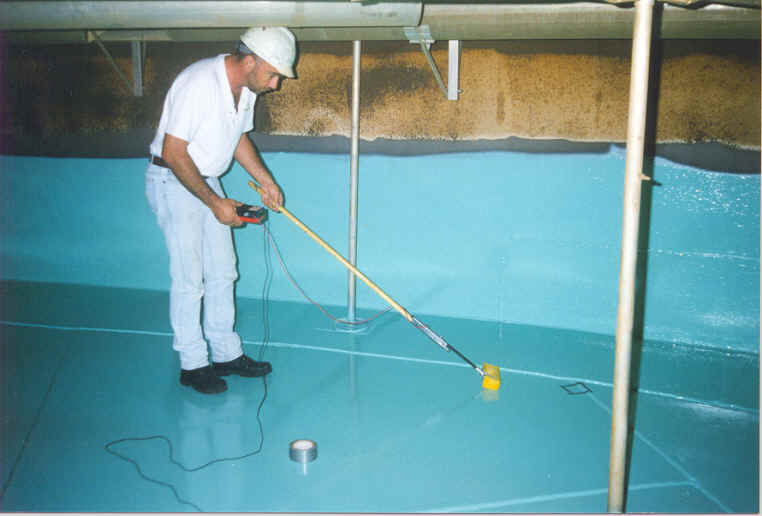| 7. Coating Failures | |
|
7.4 Types of Failures |
|
Major Contaminants on Substrates
Rust: Rust formation is an electrochemical process which results in the metal reverting to oxide state due to gradual combination with oxygen and moisture. following are the reactions:
Fe![]() Fe2+ + 2e
Fe2+ + 2e
4Fe2+
+ 2OH- ![]() 4Fe(OH)2
4Fe(OH)2
The corroded steel surface must be sandblasted to remove the corrosion impurities, salts, prior to coating application, otherwise severe corrosion would result after the coating has been applied. The sandblasted surface should never be left exposed to humidity for a longer length of time as contamination of steel surface causes catastrophic coating failure. The steel must be completely free of the acid contamination prior to coating. Salts of acids such as phosphoric acid and sulfuric acid release acids on hydrolysis and cause acid contamination.
Alkalis: Alkali salts such as sodium carbonate hydrolyse and form hydroxide in contact with an aqueous solution or moisture. Major consumers of alkalis are paper, rayon and food industry. The alkali salt contamination leads to poor adhesion of coatings. Coatings such as those based on alkyds and phenolic resins are adversely affected by alkali salt contamination.
Sulfides: Iron sulfide contamination is a major problem in oil industry. Sulfide problems occur during the drilling and processing of crude oil. Following are the reactions leading to sulfide contamination.
| Anode: | Fe |
| Cathode: | H2S + H2O |
| HS- + H2O |
|
| Product combination: | 2H+ + 2e + Fe2+
+ S- |
| Net reaction: | Fe + H2S |
The steel surface is sandblasted to white metal, allowed to rust and re-blasted before application of coating to avoid post application corrosion.
Chlorides: Chlorides are known to destroy the passivity of steel substrate. The ingress of chloride on moist metallic surface is destructive. Chloride ions are the major contributors to pitting in steel, aluminum and copper alloys. The chloride ions also destroy the alkaline state of concrete in contact with reinforcing steel bars. The ferrous chloride formed in on steel surface is converted to ferric chloride which is hygroscopic and draws moisture from the air. The following are the major reactions involved:
| Fe |
| Fe2+ + 2Cl- |
The surface becomes contaminated with chloride and presents a very serious problem for coating applications. Great difficulties are faced on wooden and reinforced concrete. In reinforced concrete, methods have been developed to extract chloride contaminated concrete.
The coatings on chloride surface can cause pinholes and blistering defects. It would be necessary to remove the contaminants caused by chloride before coating application.
Acids: The ingress of chloride ions on steel surface leads to the generation of HCl on the surface by hydrolysis. The iron salts such as ferrous chloride and ferric chloride produce hydrochloric acid.
Organic contamination: Contamination by paraffins, oils, grease, waxes and lubricants are difficult to remove once they penetrate into the structure. Specific methods of removal are to be employed depending on the metal. In oil industry, the problems of clogging of pipes and tubings are so severe that they may require steaming to remove them. The surface is washed with water after steaming and re-blasted to remove the paraffins. The contamination problem is of concern not only to steel but also aluminum, copper, brass and concrete substrates varying in magnitude. The organic contaminants cause a two-fold damage: they degrade the properties of the substrates which are to be coated, and seriously effect the bonding and service life of the coatings.

No coating job should start without adequate surface preparation.
|
|